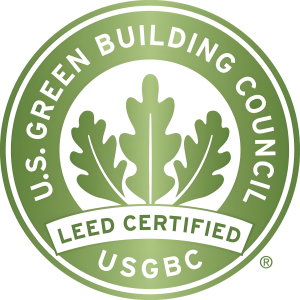Beyond the horizon
LEED was developed in the late 1990s as a way to engage design teams and building owners in a new approach to the design and operations of new buildings and major retrofits. LEED was a menu of ideas that could be used by a project team for their specific project to achieve various levels of certification. Unique in its approach, LEED was extremely simple and applied to many different building types. The first version of LEED was 37 pages, with a group of things that were required for each project and a checklist of ideas, or credits, for the project team to achieve. Each idea, or credit, had three main components: an intent, a requirement and a submittal. There were requirements for every project and there were credits. And, utlimately, the more credits achieved, the greener the building.
LEED was designed as a transformation tool. It was called (without true definition) a market transformation tool, although it was never clear which market was to be transformed and how. Nevertheless, the strategy for transformation was very simple: It was designed to recognize, through certification, the top 25% of buildings. These buildings were considered leaders. It was not designed to include the other 75% of the market. It was assumed that the rest of the market would follow the top 25%. In this way, the main strategy was that as the market improved, LEED would continually develop to raise the bar for the top 25%, and the rest of the market would continually follow toward full market transformation.
The truth of the transformation trajectory is much more complex than the original vision. The system became wildly popular and attracted thousands of projects and people. Almost everyone in the building industry wanted to be a part of its development, and all kinds of projects wanted to gain certification. This led to a massive explosion of development, leading to many thousands of pages of ideas and their related documentation.
Another central aspect of LEED was the method of development which was established early as a sort of new form of standard writing body. This process was laid out in a document known as the “Foundations of LEED,” which became both the salvation of LEED during contentious times and a major challenge during other times, as it created a very linear process for development.
Now, more than 20 years after the original draft of LEED v.1.0, no one can argue the vast impact LEED has had. They may not be able to define it, either. This is true because much of the impact has been indirect transformation of products and other projects that aren’t directly certified. Nevertheless, LEED has made its mark on the building industry and continues to do so. Over the years, however, it has been joined by a number of other approaches and systems that have tried to steal its thunder. It may be that the system itself is too well known, or it may be that the market and the industry are looking for something new and exciting that helps them believe that their work is part of a shift toward a better world: not just a world that is slightly improved, but one that is transformed into a positive truth of health for the planet and for the people who inhabit it now and in the future.



